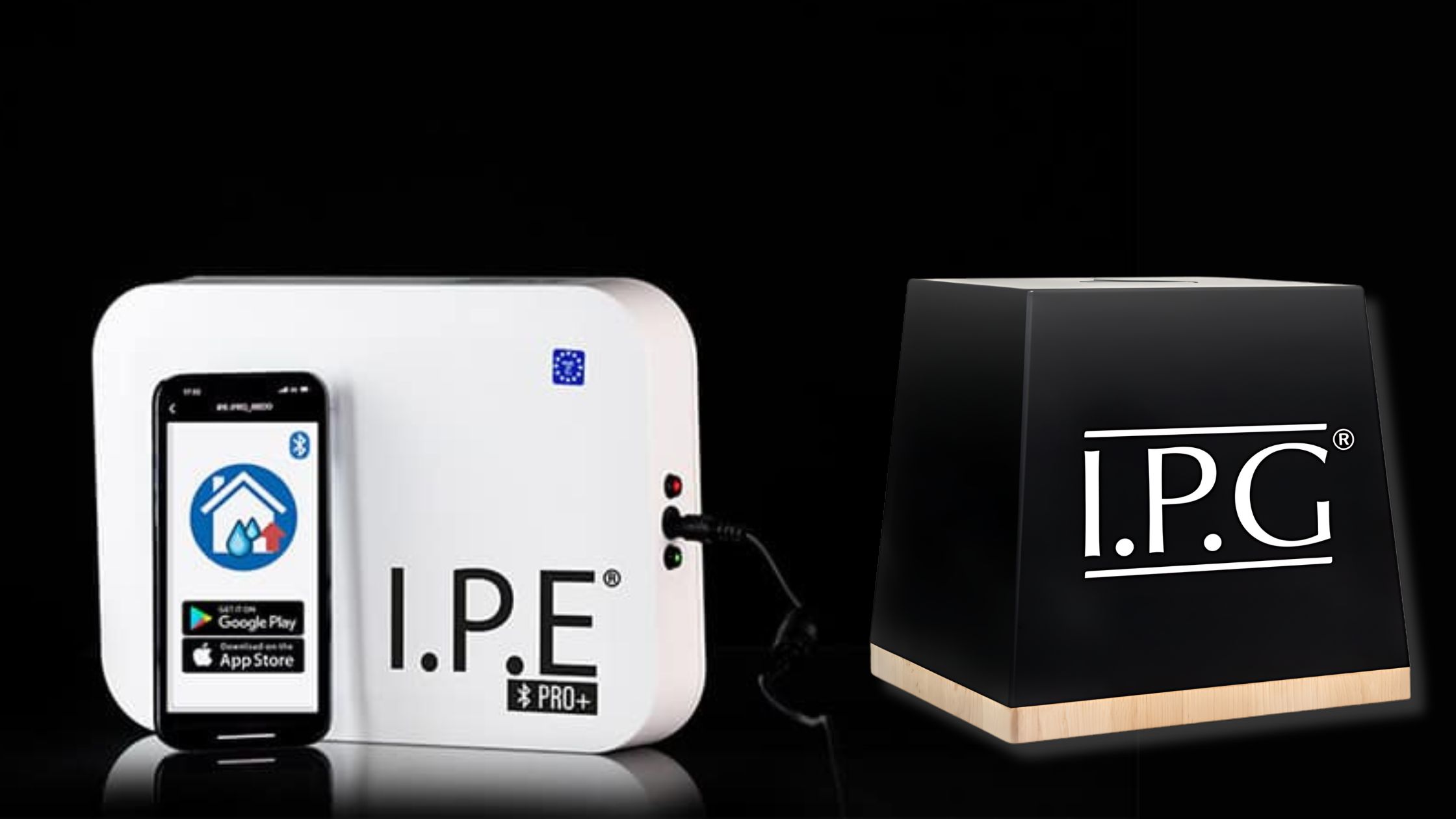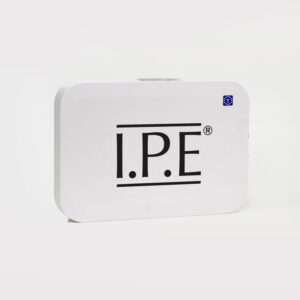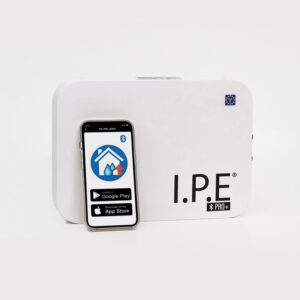Rising damp, imagine this: you own a house, a beautiful place where you like to hang out, but you’re starting to notice irregular tide marks/ stains on your walls, especially at the bottom of them. These stains are actually a visible sign of rising damp. This is when water from the ground starts to rise up through your foundations first, followed by your walls. The water gets into your house because of your porous building materials, same process as a sponge.
Now, why is it so important to choose the right polarity inverter to solve this problem? Rising damp can cause serious damage to your home. Not only can it damage your walls, but it can also encourage the growth of mould, which can be harmful to your and your family’s health. So finding the right solution to stop rising damp is essential to keep your leaving environment healthy and your house sturdy.
Do you want to know how to choose the right polarity inverter to treat this rising damp? Don’t worry, we’ve got a plan to guide you through it. In this article, we’ll explore the different types of polarity inverters in detail, offer advice on how to choose the right one for your situation, and even present some case studies to show you how it works in real life. So stay with us to find out all you need to know about treating rising damp.
A quick reminder of how rising damp happens in buildings
Understanding how rising damp works is the key to solve this annoying and reoccurring problem. So here’s a simple explanation: when the ground is damp, especially in places where there’s a lot of water, such as near rivers, lakes, coast lines or after heavy rain, this water can be absorbed by the foundations of buildings. You see, the ground is like a sponge, and this water starts to rise up through the foundations and the walls by capillary action, a bit like when you dip a piece of absorbent paper in a glass of water. And that’s exactly how rising damp occurs!
They can cause all sorts of unpleasant problems in your home. Firstly, there are those unsightly damp stains on your walls, which obviously ruin the aesthetic appearance of your living space. Then there’s the risk of mould, which can not only further damage your walls, but also affect the quality of the air inside your house. And finally, there’s the risk of deterioration of building materials, which can lead to significant repair costs in the long term. So, yes, rising damp is a serious problem that needs to be taken seriously!
The longer you wait, the worse the problem can get. By treating rising damp as soon as it appears, you can prevent further damage to your home, save money on future repairs and maintain a healthy indoor environment for you and your family. So don’t delay in taking action as soon as you notice signs of rising damp in your home!
The different types of polarity inverters
Electromagnetic Polarity Inverters (I.P.E®)
Electromagnetic polarity inverters are one of the most common solutions to treat rising damp permanently. I.P.E® works on a clever physical principle: by inverting the polarity of the water molecules trapped in your masonry, it disrupts the capillary action responsible for rising damp. The I.P.E® changes the orientation of the water molecules and by doing that it also inverts the polarity of the water molecules to send them back in the ground. By doing this, the I.P.E® prevents the water from continuing to rise through the walls, stopping the problem at its source. It’s like closing the door on the water that’s trying to get in! This action effectively prevents damp problems, keeping your walls dry for the long term. Because it operates at an extremely low frequency, the I.P.E® can effectively penetrate solid materials of your house such as the load-bearing walls and the foundations, offering a very effective and permanent, effective solution for a healthy, preserved home environment.
Geomagnetic Polarity Inverters (I.P.G®)
Now let’s move on to geomagnetic polarity inverters. These little marvels work by using the Earth’s geomagnetic fields to create a magnetic barrier that prevents water from rising up through the foundations and the walls, just like a protective shield. It’s an economic, ecofriendly and effective solution to treat rising damp without going through costly remedial works.
Polarity inverter selection criteria
House size and surface to treat rising damp
When choosing a polarity inverter to treat rising damp, the size of your house is an essential factors to take into account.
Cost and budget
Cost is often a determining factor in the choice of a polarity inverter. It’s important to strike a balance between quality and price. Some systems may be more expensive to buy, but offer superior durability and efficiency in the long term, which can save you money on future repairs. Make sure you weigh up your options carefully and choose the one that best suits your budget.
Durability and effectiveness of treatment
When you decide to buy a polarity inverter, you want to be sure that it will be durable and effective over time. Find out about the brand’s reputation and read user reviews to get an idea of the product’s quality. Also, make sure you choose a system that offers effective and permanent rising damp treatment to avoid any problems down the track .
Case study : Comparison of different polarity inverter solutions
Electromagnetic polarity inverter
| Model | Surface area | Dimensions | Weight |
| I.P.E® 12 | 100 M2 (1,076.39 ft2) | 28 x 20 x 5 cm (9.8 x 5.9 x 1.8 in) | 1 kg (2.20 lbs) |
| I.P.E® 16 | 200 M2 (2,152.78 ft2) | 28 x 20 x 5 cm (9.8 x 5.9 x 1.8 in) | 1.1 kg (2.42 lbs) |
| I.P.E® 22 | 300 M2 (3,229.17 ft2) | 28 x 20 x 5 cm (9.8 x 5.9 x 1.8 in) | 1.2 kg (2.64 lbs) |
| I.P.E® 32 | 500 M2 (5,381.95 ft2) | 28 x 20 x 5 cm (9.8 x 5.9 x 1.8 in) | 1.3 kg (2.86 lbs) |
| I.P.E® 46 | 1,500 M2 (16,145.86 ft2) | 28 x 20 x 5 cm (11.8 x 7.8 x 2.6 in) | 1.9 kg (4.18 lbs) |
| I.P.E® 62 | 2,500 M2 (26,909.77 ft2) | 28 x 20 x 5 cm (11.8 x 7.8 x 2.6 in) | 2.2 kg (4.85 lbs) |
Geomagnetic polarity inverter
| Model | Range | Dimensions | Weight |
| I.P.G® 10 | 5 m (16.4 ft) | 28 x 20 x 5 cm (9.4 x 9.4 x 9.4 in) | 2 kg (4.4 lbs) |
| I.P.G® 20 | 10 m (32.8 ft) | 28 x 20 x 5 cm (9.4 x 9.4 x 9.4 in) | 2 kg (4.4 lbs) |
| I.P.G® 30 | 15 m (49.2 ft) | 28 x 20 x 5 cm (9.4 x 9.4 x 9.4 in) | 2 kg (4.4 lbs) |





